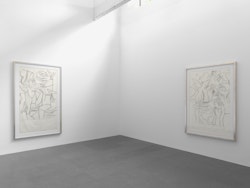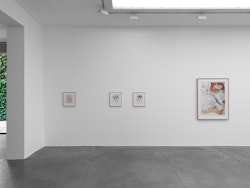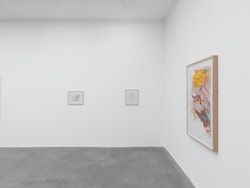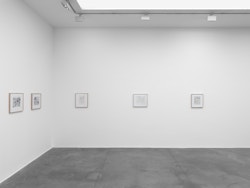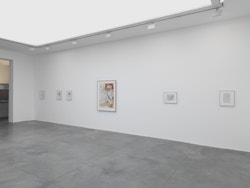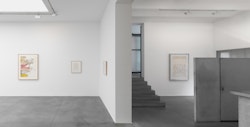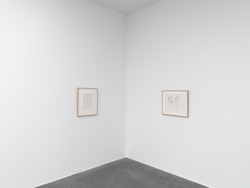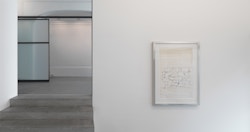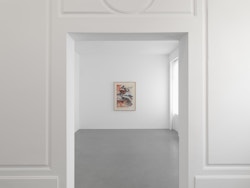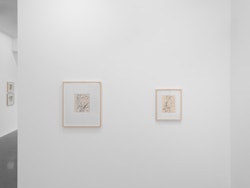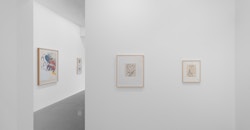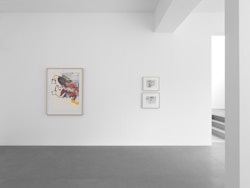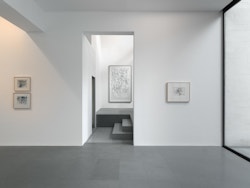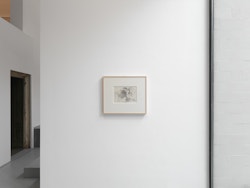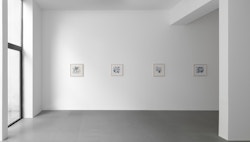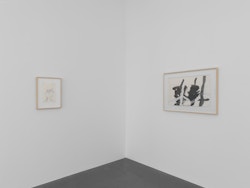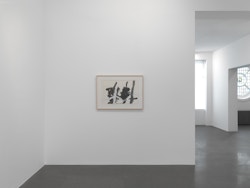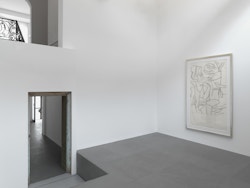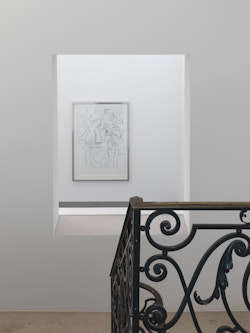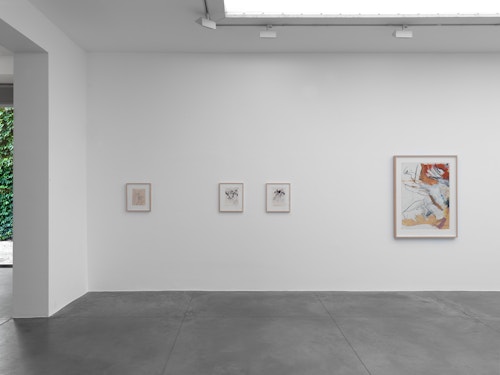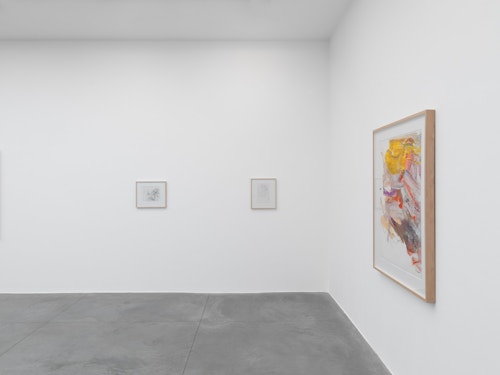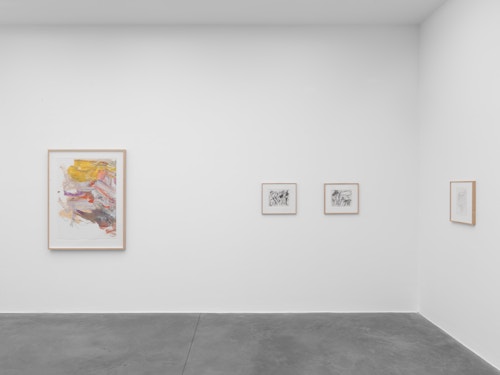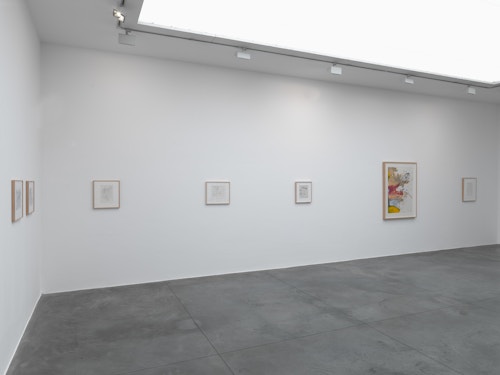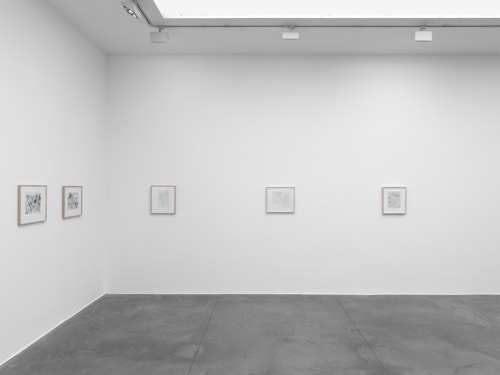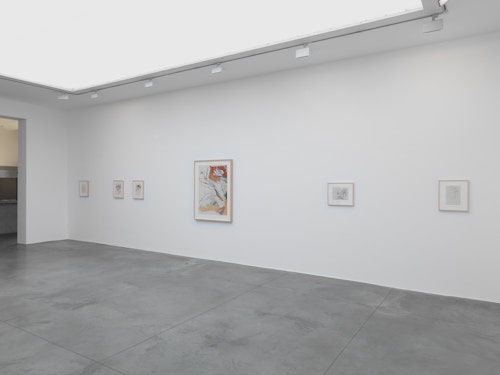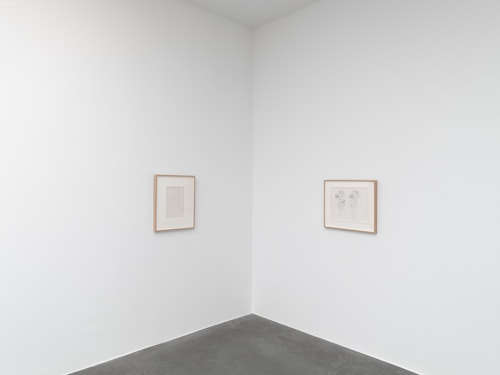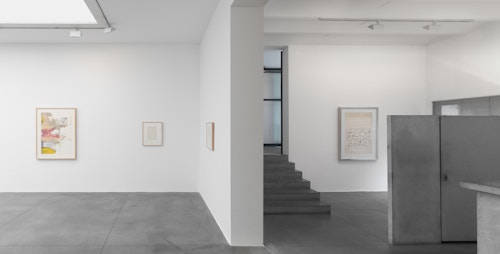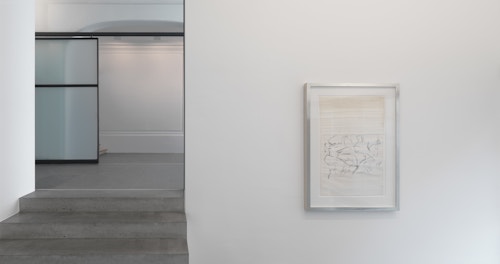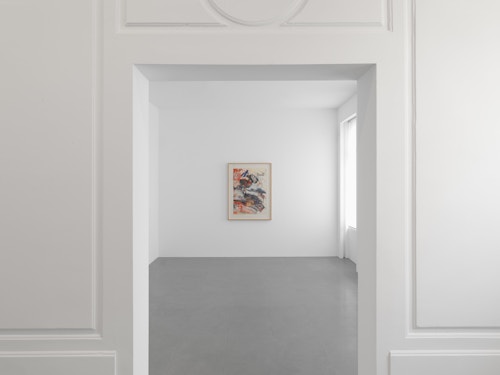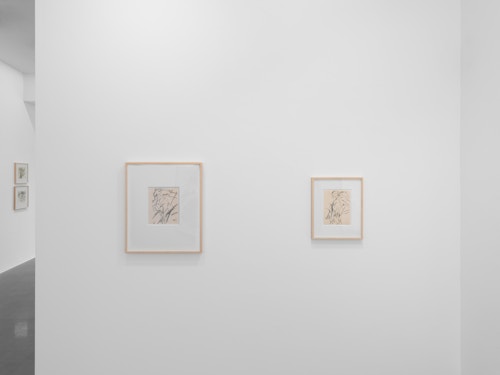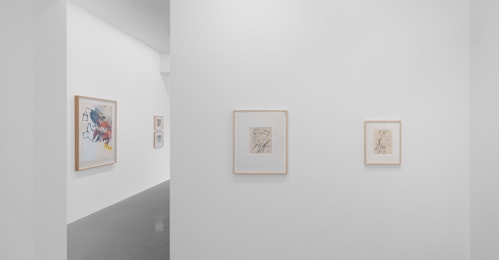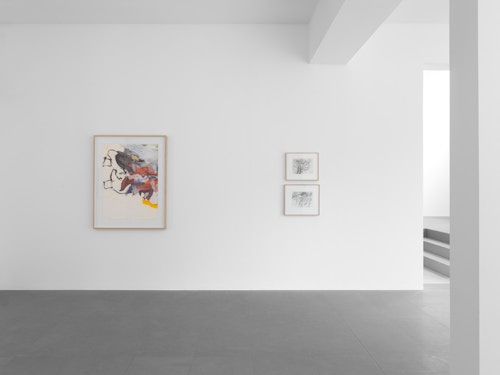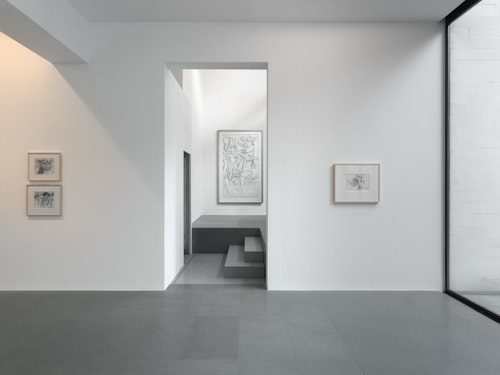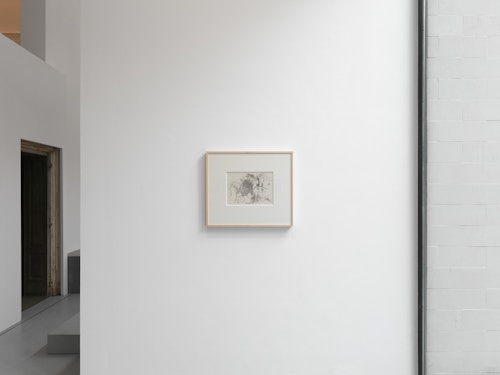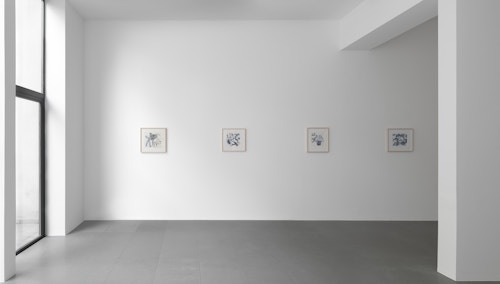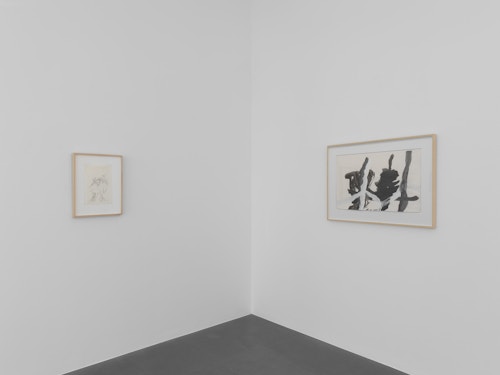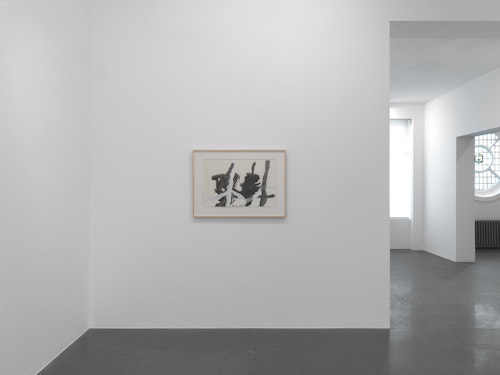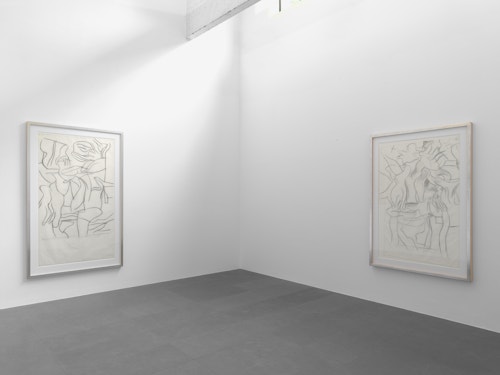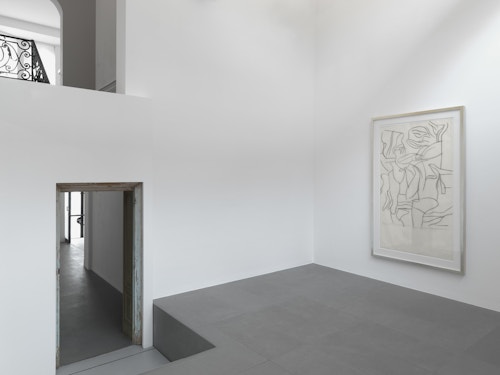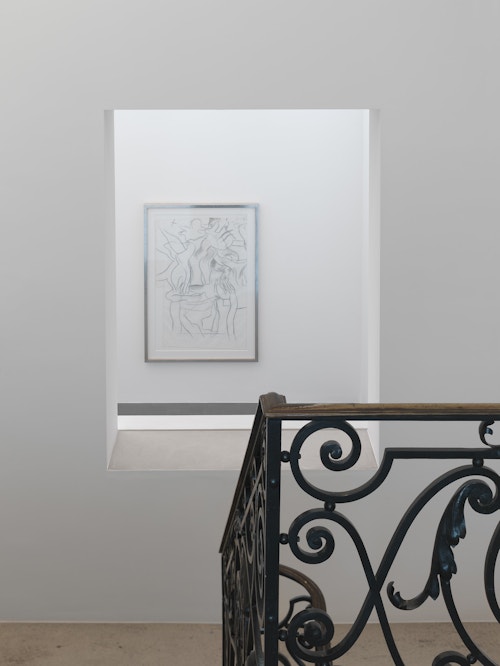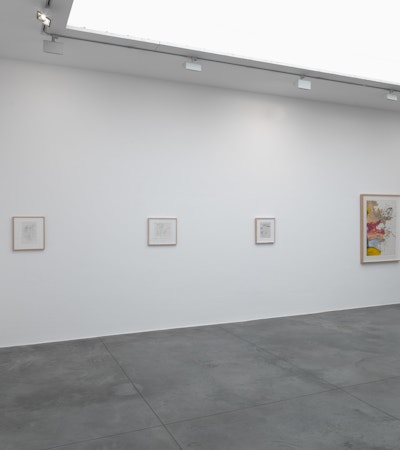
Willem de Kooning Works on Paper
Willem de Kooning (1904-1997) is one of the most important artists of the 20th century. His paintings strive towards direct expression by focusing on the act of painting itself. His canvases stand on the border between deliberate composition and free gesture. De Kooning is well known for paintings of the female figure that transcend traditional figurative and abstract categories and break up conventional aesthetic frames of reference by maximizing the expressive power of paint in line and color. While de Kooning’s work captures the speed of paint strokes on canvas, paradoxically, he was known at times to spent months completing a single work. A subtlety and depth resides in the flat plane of his paintings, which transfixes the onlooker. The work of Willem de Kooning represents in a superb manner, the act of making.
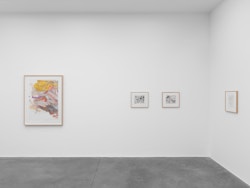
The exhibition Willem de Kooning. Works on paper is comprised of works in several media, including ink, charcoal and oil. Drawing was an essential part of his artistic practice. De Kooning drew on his canvases in charcoal, both before and while painting. He also continuously made drawings on paper, some of which became the basis for paintings. The exhibition Willem de Kooning. Works on paper illustrates his creative process of transforming lines and paint strokes into collections of, for example, figures, that dissolve into lines and movement. The pictures of Willem de Kooning are not scenic; each has the quality of an incident, an event.
Willem de Kooning. Works on paper presents an exceptional selection of works. These works on paper reveal his turbulent gestural style, the ways in which he extensively reworked his drawings and paintings, and his ability to leave a quick, but meaningful, synoptic glyph, as it were. They show de Kooning as a virtuoso artist, who persisted in producing innovative work.
Willem de Kooning was born in Rotterdam in 1904. After formal art training, he emigrated to the United States in 1926, where he became part of the New York art scene. His first solo exhibition held in 1948, was comprised exclusively of black and white abstract works. These paintings were received with critical acclaim and launched his career. A lifetime of international exhibitions followed. Numerous museums have held retrospectives of his work, amongst others, the Museum of Modern Art (1968), the Whitney Museum of American Art (1983) and the National Gallery of Art, Washington DC (1994). In 1995, the San Francisco Museum of Modern Art organised the first large exhibition of his paintings from the 1980s. More recent exhibitions include Willem de Kooning: Late Paintings (2006), which opened in the State Hermitage Museum in St. Petersburg before travelling to the Carlo Bilotti Museum, Rome.
